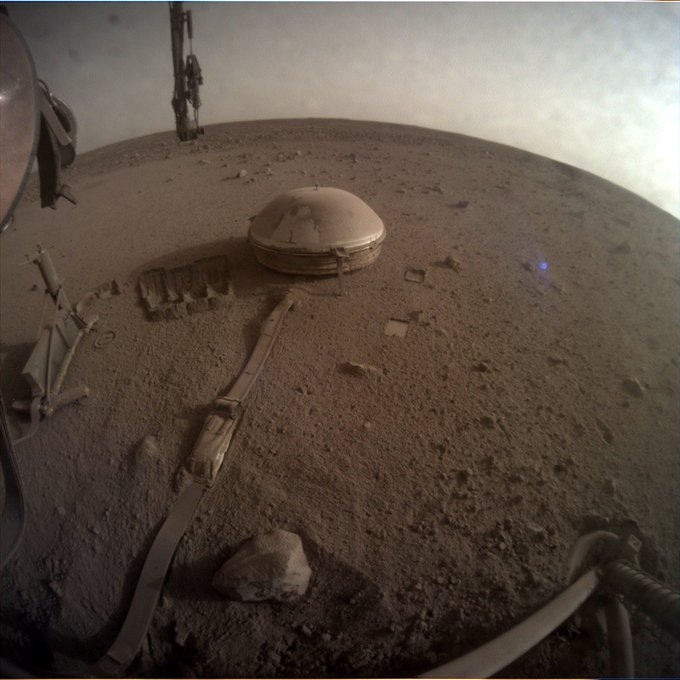London, Oct 18 (IANS) The largest ever seismic event recorded on Mars in 2022 was the result of enormous tectonic forces within the Red Planet’s crust and not a meteorite impact, according to an international team of scientists.
The quake, which had a magnitude of 4.7 and caused vibrations to reverberate through the planet for at least six hours, was recorded by NASA’s InSight lander on May 4, 2022.
Because its seismic signal was similar to previous quakes known to be caused by meteoroid impacts, the team believed that this event (dubbed “S1222a”) might have been caused by an impact as well, and launched an international search for a fresh crater.
However, the global scientist group led by the University of Oxford and included members from the European Space Agency, the Chinese National Space Agency, the Indian Space Research Organisation, and the United Arab Emirates Space Agency, examined data from their satellites orbiting Mars to look for a new crater.
Thought to be a first, where all missions in orbit around Mars collaborated on a single project, the group also checked for any other tell-tale signature of an impact (e.g., a dust cloud appearing in the hours after the quake).
After several months of searching, the team announced in the paper published in the journal Geophysical Research Letters that no fresh crater was found.
They concluded that the event was instead caused by the release of enormous tectonic forces within Mars’ interior.
The results indicate that the planet is much more seismically active than previously thought.
“We still think that Mars doesn’t have any active plate tectonics today, so this event was likely caused by the release of stress within Mars’ crust. These stresses are the result of billions of years of evolution; including the cooling and shrinking of different parts of the planet at different rates,” said Benjamin Fernando of the University of Oxford.
The scientists said they are unable to fully understand why some parts of the planet seem to have higher stresses than others. B
ut, “one day, this information may help us to understand where it would be safe for humans to live on Mars and where you might want to avoid”, Fernando said.
S1222a was one of the last events recorded by InSight before its end of mission was declared in December 2022.
The team are now moving forward by applying knowledge from this study to future work, including upcoming missions to the moon and Saturn’s moon Titan.
–IANS
rvt/ksk


